REVIEWMATE: THE QUINTESSENTIAL AUDITING PLATFORM
Introduction
Pickerson Solutions LLC was formed in 2013 when a question was asked, “In this day and age of technology, why is our industry still using spreadsheets?”.
This relevant question launched the development of ReviewMate for medical coding auditors. Pickerson Solutions’ leadership team, with experience in middle revenue cycle management, software programming and development, provides the most robust and innovative software in the industry.
We work closely with our clients through Respect for People and Teamwork in training, supporting and customization, to meet the needs of their internal and external customers.
VISION – To improve the life of medical coding auditors through compassion and innovation.
MISSION – To be the most advanced, robust, and intelligent product that exists in the healthcare revenue lifecycle market by delivering on our clients’ needs, improving their effectiveness and efficiency though innovation and committed teamwork, while maintaining our uncompromising principles.
VALUES – In pursuit of our vision, we are guided by the following values: Respect for People, Teamwork, Efficiency, Innovation, Integrity, Excellence, Stewardship, Diversity.
Background
Medical coding auditors typically juggle many different types of audits for a variety of reasons- Pre bill, Scheduled, Focus, Denial, Follow up, and Coder Onboarding.
Coding auditors use either an Excel spreadsheet or a primitive, homegrown system to complete their work. Neither of these methods are consistent from company to company and even the spreadsheet format varies meaning that as many coding companies and hospitals that exist, there could be that many different spreadsheet formats. Even the scoring methods used from company to company vary leaving the industry with no standardization. For purposes of this discussion, we will focus on the Excel spreadsheet process that is the most common tool used in the industry.
The Excel spreadsheet is populated with the medical codes and demographics and the findings are entered. Depending on the situation, the auditor may be collaborating with multiple auditors on multiple spreadsheets resulting in a daisy chain of Excel spreadsheets being circulated. Sometimes these spreadsheets get lost or formulas get erased accidentally. The reviewer also must toggle in and out of multiple resources to complete their audits. Sometimes, multiple spreadsheets need to be combined into one.
The spreadsheet is then emailed to each individual coder to reveal the audit findings. Depending on the workflow, some auditors must breakdown the master spreadsheet into individual workbooks for each coder.
The auditor fields questions/comments/disagreements from a group of coders via email. This usually results in a barrage of incoming emails from the coders. Depending on the content of the responses, the auditor will need to go into the spreadsheet, hunt for the account in question, and change or adjust the findings.
This is the most chaotic time in an audit!!
As the clock ticks, the auditor takes the master spreadsheet and try to analyze the findings, by viewing every spreadsheet to determine common trends and provide some meaningful information to the management team. This manual process sometimes results in inconsistent findings or missed opportunities due to no fault of the auditor as the process is 100% manual.
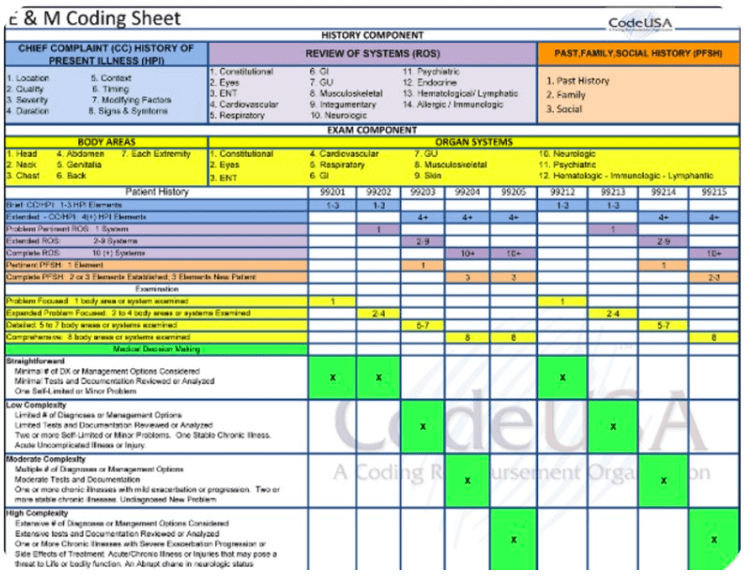
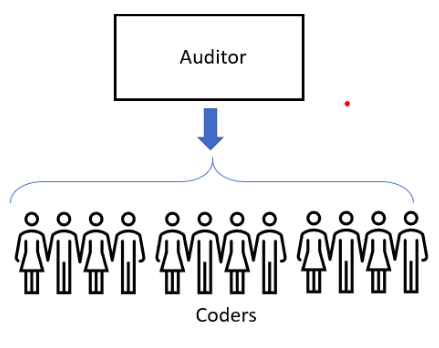
Effectiveness and efficiency of the auditor is diminished due to the manual work that is needed to complete the audit.
Example of time spent for a typical Inpatient 50 chart review:
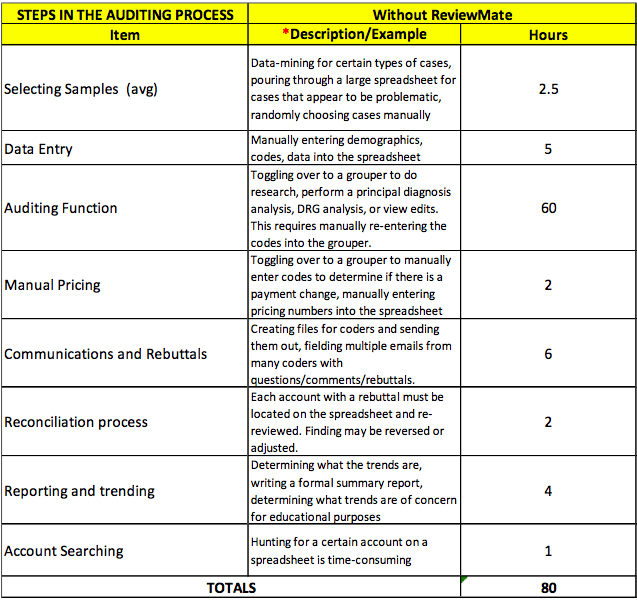
Solution - ReviewMate Auditing Software
ReviewMate is software that integrates all aspects of revenue cycle management and, since its inception, ReviewMate auditing platforms have been used to audit millions of diagnosis codes and procedures. It is leveraged by both enterprise hospital systems as well as independent auditing agencies. In the past seven years, the demand on ReviewMate has grown exponentially making us the leading software technology assisting organizations in conducting audits and improve coders and physicians’ accuracies and increasing compliance and proper reimbursement.
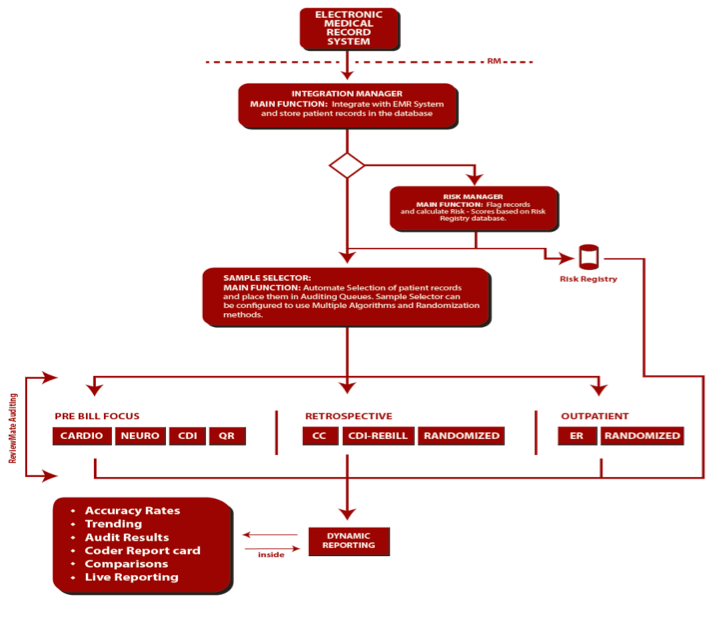
ReviewMate Modules
IPPS
The IPPS (Facility Inpatient) auditing module is part of ReviewMate auditing suite and provides:
• Accuracy rates for all elements including: MS-DRG, APR-DRG, SOI, ROM, Diagnosis, Principal Diagnosis, Secondary Diagnosis, POA, Discharge Disposition, Procedure (PCS), CPT/HCPCS (optional), Procedure Provider, Procedure date, MCC, CC, HCC and HAC.
• Both MS-DRG and APR-DRG pricing and grouping
• ICD-10-CM, ICD-10-PCS, ICD-9-CM and CPT/HCPCS code sets
• Support for Pro Fee audit within the IPPS module
• Identification on the screen of codes with MCC/CC/HAC/HCC value
OPPS
The OPPS (Facility Outpatient) auditing module is part of ReviewMate auditing suite and provides:
• Accuracy rates for all elements, including APC, CPT/HCPCS, E&M, non-E&M, Modifier, Revenue Code, Service Units, Diagnosis, Discharge Disposition (optional), Procedure Provider, Procedure Date, and HCC
• APC and fee schedule pricing and grouping
• ICD-10-CM, ICD-10-PCS (optional) and CPT/HCPCS procedure code sets
• Accuracy rates by Patient Type (observation, ED, Clinic, etc)
• Ability to assign responsibility on the line-item level to obtain individualized accuracy rates for the
different contributors to the UB-04 (coder, charge team, radiology, etc)
• Support for Pro Fee audit within the OPPS module
• Identification of line items that were recalculated because of another line item revision
ASC
The ASC (Ambulatory Surgery Center) auditing module is part of ReviewMate auditing suite and provides:
• Accuracy rates for all elements, including APC, CPT/HCPCS, E&M, non-E&M, Modifier, Service Units, Diagnosis, Procedure Provider, Procedure Date, and HCC
• APC and fee schedule pricing and grouping
• ICD-10-CM, ICD-10-PCS (optional) and CPT/HCPCS procedure code sets
IPPS, OPPS, PROFEE, ASC modules of ReviewMate include Code Lookup, Full suite of references including Coding Clinic, CPT Assistant, Clinotes, Principal Diagnosis Analysis, DRG Analysis, and the AHA Coding Handbook and Accuracy Rates.
CMS-HCC
The CMS-HCC (Risk Adjustment) auditing module is part of ReviewMate auditing suite and provides:
• The ability to parse large amounts of HL7 data to “weed out” visits that do not qualify for CMS-HCC reporting
• After uploading coded data, auditing can be accomplished in any of three ways:
o Reviewers can audit each patients’ diagnosis codes on an encounter-by-encounter in a granular fashion.
o Reviewers can access a listing of each patient’s missing HCCs and add them, if appropriate. o A listing of the diagnosis and HCCs missing from year to year, by patient, can be provided to
interested parties to make decisions such as, where to concentrate auditing efforts and what patients need to be seen in the current year.
WORKFLOW ANALYTICS
Workflow Analytics is a module that helps managers understand the details of their audits and measure the productivity of their staff. It highlights any bottlenecks that may increase project duration and increase auditing costs. This module displays detailed metrics from the beginning of an audit until the reporting is finalized.
It will show staff productivity on a monthly, daily, and yearly bases for both reviewers and coders. The system can display and report turnaround times of patient accounts and audits so the user can understand their workflow pattern and forecast future projects.
It creates metrics for:
• Findings per Audit Type per Reviewer
• Communication and collaboration time
• Number of diagnosis, procedure and CPT/HCPCS codes reviewed
• Number of assigned records vs. number of completed records
• Timeline of every single event taking place from creation of an audit to completion
• Compare productivity between two auditors taking in consideration many aspects of audit complexity.
HCC Analyzer
• CMS-HCC Analyzer can parse data from EDI billing files automatically and convert to an Excel spreadsheet. It can analyze up to 10 million claims in one day and generate an analysis that can help auditors/managers concentrate auditing efforts on the most at-risk patients. It also identifies missing encounters for the current year to assist in identifying patients that need to be seen by a provider.
• CMS-HCC analyzer can be used for facilities, physician offices and any care provider facility that deals with HCC risk adjustment.
• HCC Analyzer will integrate seemingly with ReviewMate HCC Auditing Module in which you can convert potential HCC issues to an actual deep dive audit managed by an HCC auditor.
SAMPLE SELECTOR AND RANDOMIZER
Integration Manager can automate audit creation and eliminates the manual process of importing data into ReviewMate from spreadsheets. Data can be mined with a preset library of rules, or rules can be created by the client. Flags in the data set can be used to pull accounts out of the data. These accounts can then be randomized, if needed, then placed into an audit. This can be accomplished manually or on a preset schedule.
RISK MANAGER
Risk Manager is an artificial intelligence module that translates previous audit findings and hundreds of industry standard coding practices to actual logic that detects and reports on potential issues in the data set that may result in identification of risks or opportunities related to reimbursement. Risk Manager learns from past audit findings to improve accuracy and provide insights to auditing teams. It creates a weighted algorithm that can link findings to other similar issues that may appear in your data set.
INTEGRATION MANAGER
ReviewMate can integrate with multiple sources of data formats including Electronic Medical Record EMR (E.g. Epic, Cerner) systems, HL7 interfaces, EDI 837 files, .csv files and Secure FTP sources.
Integration Manager can automate audit creation and eliminates the manual process of importing data to ReviewMate from spreadsheets. Audits can be created and populated with accounts automatically on a schedule.
DATA CAPTURE
Electronic Data Capture allows the user to create a customized form in which data can be collected that is not already contained in ReviewMate (POC, Admit Source, DNR states, etc)
Benefits
The use of ReviewMate Auditing Software has yielded and demonstrated client efficiencies in
– Auditor performance
– Communication
– Transparency
– Accountability
– Workflows
Example of time spent for a typical Inpatient 50 chart review using ReviewMate.
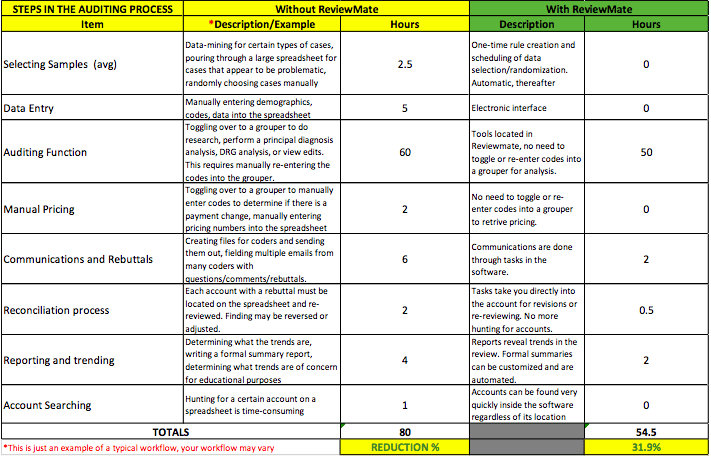
32% reduction in audit time requirements and cost, on average, to support increase effectiveness and efficiency of the auditor.
Conclusion
ReviewMate software was designed by auditors, for auditors, and continues to be improved to provide the most robust and innovative one-stop shop for auditors and managers. It is a complete suite to inspect, organize and manage medical coding audits with efficiency.
